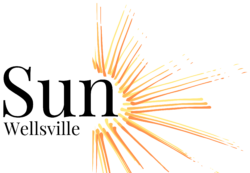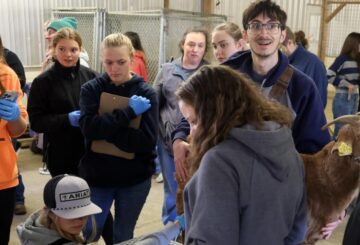Don’t eat the berries!!!
By Bob Confer
This time of the year you might take notice of shrubs or small trees bearing dark-purple or black berries.
Don’t eat them.
The fruits of common buckthorn are not kind to man or mammals as they possess a chemical called emodin which increases water content in the colon and leads to the runs.
Birds, on the other hand, love them.
The berries (more appropriately known as drupes) ripen in late-summer and will last through a good part of the winter, feeding some species of birds that have an affinity for berries and stick around Western New York while most of their peers have flown south (such as robins and bluebirds).
Birds being birds, they will fly off and leave droppings miles from the buckthorn shrub, dispersing the seeds, of which there are two to four in each drupe. It’s no different than what they do with mulberries or blackberries.
While the outcome of that — an increased range and number for these shrubs — might seem to be good news for the birds, it’s really bad news for the environment overall. Buckthorn is an invasive species, a horrible one at that.
Buckthorn originally hails from Europe and western Asia. It was brought to North America in the early-1800s as a wind break and an ornamental plant that harkened back to the homelands of the United States’ burgeoning immigrant population.
Since then, the shrub has become naturalized on this continent, far escaping the confines of backyards. Tolerant of a variety of soils, it can be found anywhere, from hedgerows to meadows to forests. I’ve found them in wet areas (such as vernal pools) to the driest of locations (such as waste areas).
The seeds that were spread far and wide by birds can remain dormant for 4 to 7 years, becoming active when the best of conditions present themselves. Once that happens, they can grow as dense thickets and easily choke out native plants thanks to their root systems. They are shallow, fibrous, and extensive, which inhibits the ability of wildflowers and trees to take root while, at the same time, robbing those other plants of essential nutrients that are found in the topsoil.
The leaves (which are oval in shape with serrated edges and among the first to appear and the last to fall) have a high amount of nitrogen. Their decomposition changes soil chemistry, increasing the pH level which starves native plants while creating better growing conditions for the buckthorns.
Removing these shrubs and protecting our natives is no easy task. You should cut the smaller saplings, girdle the older trees (which can reach 25 feet in height), and apply herbicide to stumps and cuttings. Some nature lovers and agencies go so far as to use heavy equipment or prescribed burns to rid the landscape of them.
If you think you have buckthorns on your property – now is a good time to find them — verify the identification with any number of online tools or a field guide. Then, go about eradicating them. You’ll be removing an invasive species that has, for two centuries now, had an adverse impact on our environment.
Bob Confer is the naturalist behind Exploring the Western NY Wilds, a nature series dedicated to our regional flora, fauna, fungus, and more! You can reach him anytime, Bob@ConferPlastics.com






